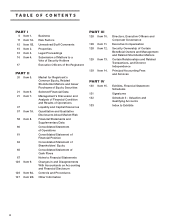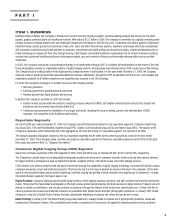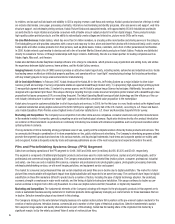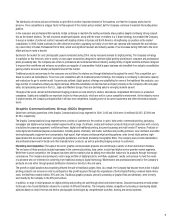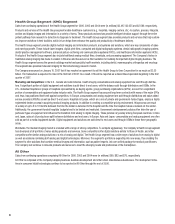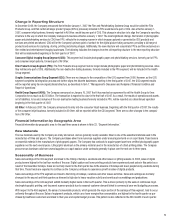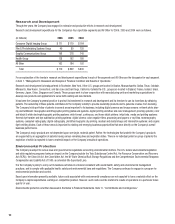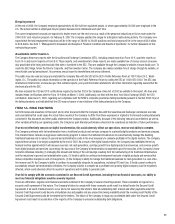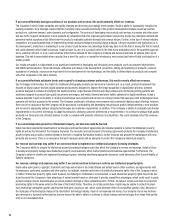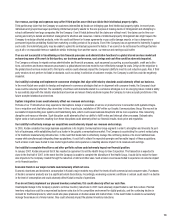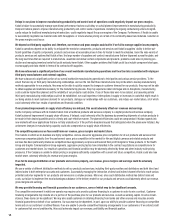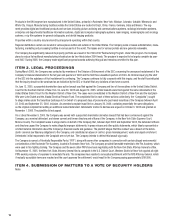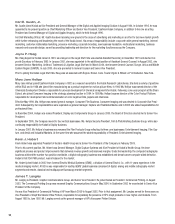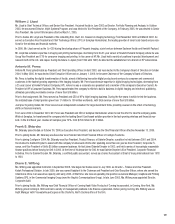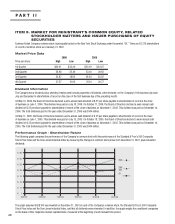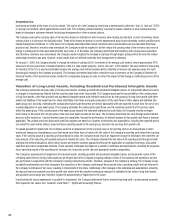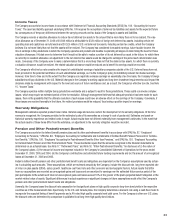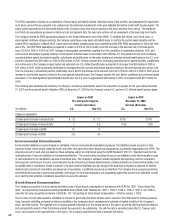Kodak 2006 Annual Report Download - page 21
Download and view the complete annual report
Please find page 21 of the 2006 Kodak annual report below. You can navigate through the pages in the report by either clicking on the pages listed below, or by using the keyword search tool below to find specific information within the annual report.
Delays in our plans to improve manufacturing productivity and control cost of operations could negatively impact our gross margins.
Kodak’s failure to successfully manage operational performance factors could delay or curtail planned improvements in manufacturing productivity.
Delays in Kodak’s plans to improve manufacturing productivity and control costs of operations, including its ongoing restructuring actions to signifi-
cantly reduce its traditional manufacturing infrastructure, could negatively impact the gross margins of the Company. Furthermore, if Kodak is unable
to successfully negotiate raw material costs with its suppliers, or incurs adverse pricing on certain of its commodity-based raw materials, reduction in
the gross margins could occur.
We depend on third party suppliers and, therefore, our revenue and gross margins could suffer if we fail to manage supplier issues properly.
Kodak’s operations depend on its ability to anticipate the needs for components, products and services and Kodak’s suppliers’ ability to deliver suf-
ficient quantities of quality components, products and services at reasonable prices in time for Kodak to meet its schedules. Given the wide variety of
products, services and systems that Kodak offers, the large number of suppliers and contract manufacturers that are dispersed across the globe, and
the long lead times that are required to manufacture, assemble and deliver certain components and products, problems could arise in planning pro-
duction and managing inventory levels that could seriously harm Kodak. Other supplier problems that Kodak could face include component shortages,
excess supply and risks related to terms of its contracts with suppliers.
We have outsourced a significant portion of our overall worldwide manufacturing operations and face the risks associated with relying on
third party manufacturers and external suppliers.
We have outsourced a significant portion of our overall worldwide manufacturing operations to third parties and various service providers. To the
extent that we rely on third party manufacturing relationships, we face the risk that those manufacturers may not be able to develop manufacturing
methods appropriate for our products, they may not be able to quickly respond to changes in customer demand for our products, they may not be able
to obtain supplies and materials necessary for the manufacturing process, they may experience labor shortages and/or disruptions, manufacturing
costs could be higher than planned and the reliability of our products could decline. If any of these risks were to be realized, and assuming similar
third-party manufacturing relationships could not be established, we could experience interruptions in supply or increases in costs that might result in
our being unable to meet customer demand for our products, damage our relationships with our customers, and reduce our market share, all of which
could adversely affect our results of operations and financial condition.
If our planned improvements in supply chain efficiency are delayed, this could adversely affect our revenues and earnings.
As the Company continues with its transformation from a traditional products and services company to a digital products and services company,
Kodak’s planned improvement in supply chain efficiency, if delayed, could adversely affect its business by preventing shipments of certain products to
be made in their desired quantities and in a timely and cost-effective manner. The planned efficiencies could be compromised if Kodak expands into
new markets with new applications that are not fully understood or if the portfolio broadens beyond that anticipated when the plans were initiated. Any
unforeseen changes in manufacturing capacity could also compromise our supply chain efficiencies.
The competitive pressures we face could harm our revenue, gross margins and market share.
The markets in which we do business are highly competitive, and we encounter aggressive price competition for all our products and services from
numerous companies globally. Over the past several years, price competition in the market for film and digital cameras and related products and
services has been particularly intense as competitors have aggressively cut prices and lowered their profit margins for these products. In the Health
Group and Graphic Communications Group segments, aggressive pricing tactics have intensified in the contract negotiations as competitors vie for
customers and market share. Our results of operations and financial condition may be adversely affected by these and other industry-wide pricing
pressures. If the Company is unable to obtain pricing or programs sufficiently competitive with current and future competitors, Kodak could also lose
market share, adversely affecting its revenue and gross margins.
If we fail to manage distribution of our products and services properly, our revenue, gross margins and earnings could be adversely
impacted.
We use a variety of different distribution methods to sell our products and services, including third-party resellers and distributors and both direct and
indirect sales to both enterprise accounts and customers. Successfully managing the interaction of direct and indirect channel efforts to reach various
potential customer segments for our products and services is a complex process. Moreover, since each distribution method has distinct risks and
costs, our failure to implement the most advantageous balance in the delivery model for our products and services could adversely affect our revenue,
gross margins and earnings.
We may provide financing and financial guarantees to our customers, some of which may be for significant amounts.
The competitive environment in which we operate may require us to provide customer financing to a customer in order to win a contract. Customer
financing arrangements may include all or a portion of the purchase price for our products and services, as well as working capital. In some circum-
stances, these loans can be significant. We may also assist customers in obtaining financing from banks and other sources and may also provide
financial guarantees on behalf of our customers. Our success may be dependent, in part, upon our ability to provide customer financing on competitive
terms and on our customers’ creditworthiness. If we are unable to provide competitive financing arrangements to our customers or if we extend credit
to customers that are not creditworthy, this could adversely impact our revenues, profitability and financial position.


